BirdsCaribbean is excited to announce the 2025 cohort of grantees under two prestigious named awards, the David S. Lee Fund for the Conservation of Caribbean Birds, and the James A. Kushlan Research and Conservation Fund.
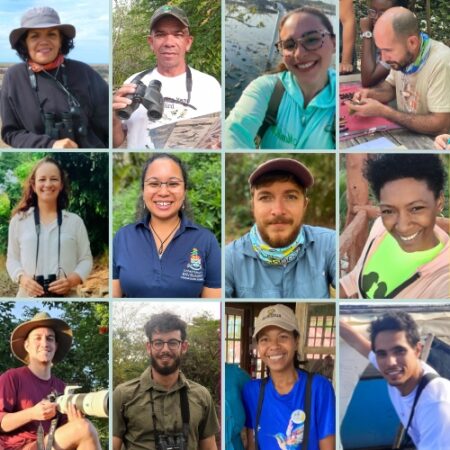 These eleven projects will advance the study and conservation of avifauna in six different Caribbean countries: Cuba, Puerto Rico, the Cayman Islands, Trinidad and Tobago, Mexico (offshore islands in the Caribbean Sea), and Venezuela (Caribbean coast).
These eleven projects will advance the study and conservation of avifauna in six different Caribbean countries: Cuba, Puerto Rico, the Cayman Islands, Trinidad and Tobago, Mexico (offshore islands in the Caribbean Sea), and Venezuela (Caribbean coast).
Keep reading to discover what exciting plans have been proposed by each awardee, and stay tuned for results and accomplishments in future issues of the Journal of Caribbean Ornithology and blog articles.
Congratulations to these outstanding researchers and conservationists from our BirdsCaribbean community!
James A. Kushlan Research and Conservation Fund
Trophic Ecology as a Tool to Understand Differences in the Reproductive Success of Two Species of Terns (Onychoprion fuscata and Onychoprion anaethetus) in the Mexican Caribbean
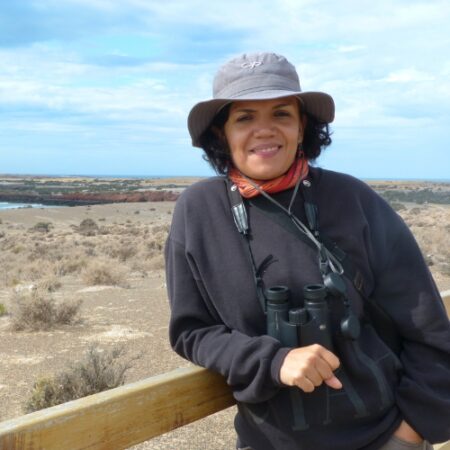 Adriana Vallarino Moncada, Escuela Nacional de Estudios Superiores Unidad Mérida, Universidad Nacional Autónoma de México
Adriana Vallarino Moncada, Escuela Nacional de Estudios Superiores Unidad Mérida, Universidad Nacional Autónoma de México
More than half of the world’s seabirds are declining, but there is so much still to learn about many of our seafaring species. Two of these are the Sooty Tern (O. fuscata) and the Bridled Tern (O. anaethetus), where population trends and ecology are poorly understood. This project aims to address this lack of knowledge by studying these two terns at Isla Mujeres. This is the only place these birds nest in the Mexican Caribbean! Building on work already done monitoring the nesting colony and banding chicks, Adriana is taking this applied research a step further by using GPS tracking, stable isotope analysis, and diet studies. This work will shed light on how climate, ocean conditions, and human activities impact the survival of these terns. The data collected will identify key feeding areas and potential threats, providing critical information to help keep these breeding colonies thriving. In addition, the project will expand community outreach programs in Isla Mujeres and Cancún, raising awareness and getting more local people involved in protecting these remarkable seabirds.
Discovering the Birds of the Monte Cabaiguán Wetland, Las Tunas, Cuba
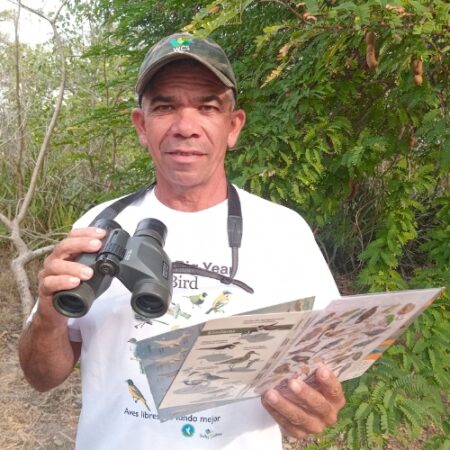 Manuel López Salcedo, Provincial Enterprise for the Protection of Flora and Fauna, Las Tunas. Delta del Cauto Protected Area, Monte Cabaniguán Sector
Manuel López Salcedo, Provincial Enterprise for the Protection of Flora and Fauna, Las Tunas. Delta del Cauto Protected Area, Monte Cabaniguán Sector
Monte Cabaiguán is a wetland that plays a crucial role in protecting coastal areas from erosion and filtering pollutants. Home to thriving mangroves and bustling colonies of waterfowl, it supports a rich variety of wildlife. This unspoilt wetland is essential for the breeding and survival of many migratory and resident bird species. The goal of this project is to update the baseline data on the wetland’s birdlife, assess the health of its ecosystems, and develop strategies for sustainable conservation. This project has local communities at it’s heart, with plans for environmental education and the promotion of conservation; safeguarding this unique natural treasure for future generations!
Monitoring Breeding Colonies, Nesting Success and Productivity of White-tailed Tropicbirds (Phaeton lepturus catesbyi) in the North-west Coastal Cliffs Important Bird Area in Puerto Rico
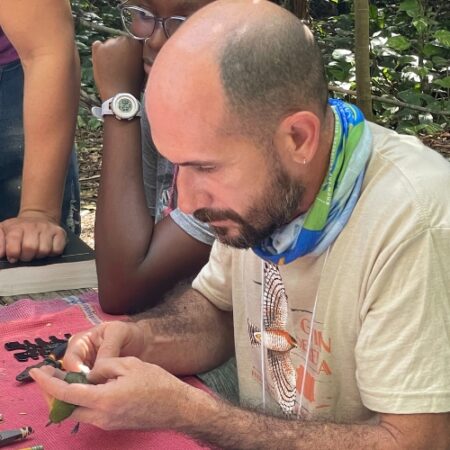 Alcides L. Morales-Pérez, Independent Researcher
Alcides L. Morales-Pérez, Independent Researcher
Northwestern Puerto Rico is home to the Acantilados del Noroeste (north-west cliffs) Important Bird Area (IBA). Amongst their rich biodiversity, these cliffs are home to an important nesting population of White-tail Tropicbirds, a bird at risk in the Caribbean. This one of the few White-tailed Tropicbird breeding colonies on the Puerto Rican mainland. To help protect and gain more knowledge about these beautiful seabirds Alcides will host a workshop to engage the local community, students, and other stakeholders in seabird conservation, focusing on White-tailed Tropicbirds. Participants will be trained to monitor nests and actively contribute to data collection. Through colony surveys, nest monitoring, and adult survival assessments the project aims to better understand how these birds are faring. It also aims to estimate the size and extent of the colonies on the cliffs, with local volunteers playing a key role.
Diversity, Abundance, Reproductive Colonies and Distribution of Waterbirds at Los Testigos Archipelago, Venezuela
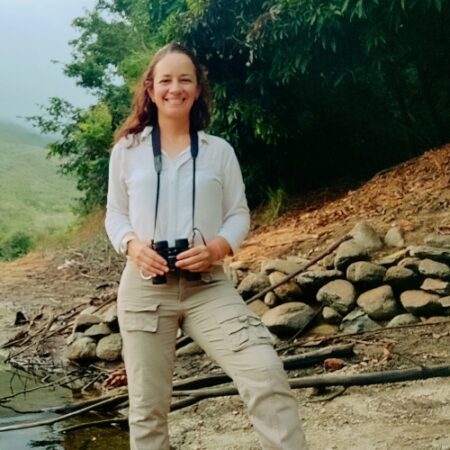 Jemimah Rivera, INPARQUES, División de Investigación y Monitoreo Ambiental
Jemimah Rivera, INPARQUES, División de Investigación y Monitoreo Ambiental
The Los Testigos Archipelago in Venezuela is known for its incredible biodiversity. But the area has been largely overlooked by researchers due to its remote location, with only two bird expeditions in the last 50 years. While little is known about the area, it’s believed to be an important breeding ground for several seabird species. This project aims to assess the conservation status of the archipelago’s seabirds and landbirds. During the project Jemimah and her intrepid team will take on the challenge to explore the 16 islands of Los Testigos! They will study the birdlife of the islands including their seabird breeding colonies. The team will conduct surveys on foot and by boat, counting nests, eggs, and chicks. This research will be a major step in understanding the birds of the South Caribbean. With threats like invasive species, pollution, and overfishing, this study is crucial to help protect these birds for the future.
David S. Lee Fund for the Conservation of Caribbean Birds
Establishing Year-Round Bird Banding stations to Monitor Resident and Migratory Species in Trinidad and Tobago
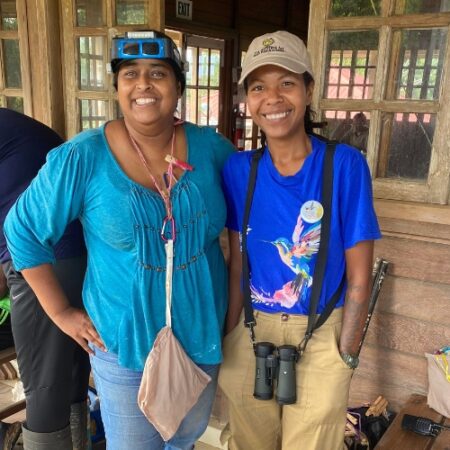 Giselle Ragoonanan, Trinidad and Tobago Bird Observatory and Research Centre
Giselle Ragoonanan, Trinidad and Tobago Bird Observatory and Research Centre
The Trinidad and Tobago Bird Observatory (TTBO) is setting up year-round bird banding stations to monitor both resident and migratory bird populations across the islands. These stations will collect crucial data on bird life cycles, migration, and population health, helping to identify trends and habitat needs. This data will guide conservation efforts, ensuring the protection of key areas for breeding and survival. The TTBO also plans to involve the local community through outreach programs, raising awareness and encouraging citizen participation in bird conservation. Additionally, the continuous monitoring will help track rare species and migration events, providing much needed insights into changing bird populations in the Caribbean.
Conservation Ecology of the Puerto Rican Oriole
 Michael Ocasio, University of Maryland, Baltimore County
Michael Ocasio, University of Maryland, Baltimore County
The Puerto Rican Oriole is a Caribbean endemic bird facing significant conservation challenges. One major threat is brood parasitism by Shiny Cowbirds, which lay their eggs in oriole nests. As a result, Puerto Rican Orioles often raise cowbird chicks instead of their own, leading to low reproductive success. This project will compare the oriole’s abundance, survival, and reproductive success in both lowland and highland habitats. Through surveys, banding, nest monitoring, and Motus tracking, the project will explore how habitat type affects their breeding and provide insights into their movements and territory use throughout the year. The findings will support conservation efforts in Puerto Rico and contribute to international programs like the IUCN Red List.
Study of the Reproductive and Trophic Ecology of Gundlach’s Hawk (Astur gundlachi), an Endemic and Threatened Bird of Cuba
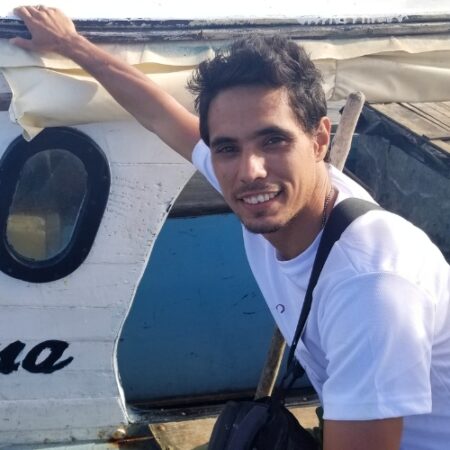 Ernesto Vergara Llano, Faculty of Biology, University of Havana
Ernesto Vergara Llano, Faculty of Biology, University of Havana
Gundlach’s Hawk, a critically endangered raptor endemic to Cuba, is facing population declines and fragmented habitats, but much of its breeding and feeding behavior remains a mystery. This exciting project will dive into the secret life of this elusive hawk, focusing on two key areas in western Cuba: the National Botanical Garden and the Ecological Reserve of Los Petriles. Using camera traps to avoid disturbing the hawks, researchers will capture the hawks’ breeding behaviors, nest sites, and feeding habits. The results will provide crucial information to help protect this incredible species and improve habitat management efforts, giving the Gundlach Hawk a fighting chance for survival!
A Comparison of Avian Species Richness between Protected and Disturbed Areas in Grand Cayman, using Passive Avian Acoustic Monitoring
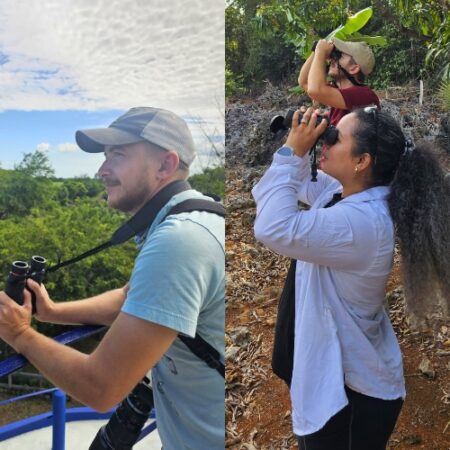 Matthew Southgate and Simone Williams
Matthew Southgate and Simone Williams
This exciting project will uncover the birdlife of Grand Cayman using passive acoustic recorders to capture birds’ calls and songs! With bird populations facing major threats from habitat loss due to development, it’s crucial to understand what helps them thrive. The goal is to assess the health of protected areas and guide decisions on conservation and development. The team will measure bird species richness in protected areas, compare it with nearby disturbed land, and identify the factors that influence it. Citizen scientists and student interns will be involved in monitoring, bird surveys, and community outreach. Plus, the project will contribute audio recordings to improve the Merlin Bird ID app, making it easier for this app to identify native species. By understanding bird populations, this project will help protect ecosystems, prevent environmental damage, guide future restoration efforts and promote bird-friendly development.
Action Plan for the Conservation of Psittacidae in the Pico Cristal National Park, Cuba
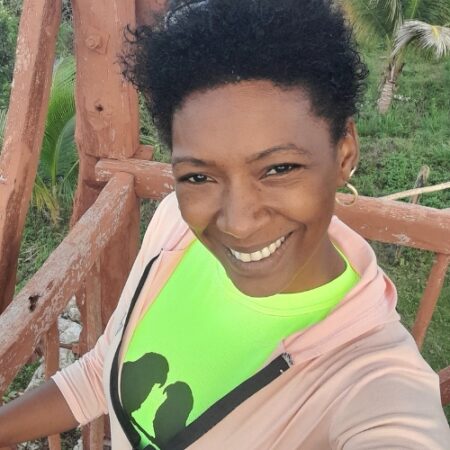 Inés Lourdes Fernández Rodríguez, Empresa Flora y la Fauna Santiago de Cuba
Inés Lourdes Fernández Rodríguez, Empresa Flora y la Fauna Santiago de Cuba
Pico Cristal National Park in Cuba is home to the island’s vibrant parrot (psittacidae) species, including the Near Threatened Cuban Amazon and the Vulnerable Cuban Parakeet, or “Catey”. These colorful birds are facing serious threats from habitat loss, hunting, and being captured for the pet trade. This project aims to create and carry out a comprehensive Action Plan to protect these endangered species. Building on past efforts like providing artificial nests to help with breeding, the project will monitor bird populations, identify important conservation areas, and study their ecological and nutritional needs. Students, researchers, and the local community will all be involved, with a focus on raising awareness and supporting bird conservation across Cuba.
Impact of Nest Temperatures on Mortality Rates of the Endangered Yellow-shouldered Blackbird (Agelaius xanthomus) in Southwestern Puerto Rico
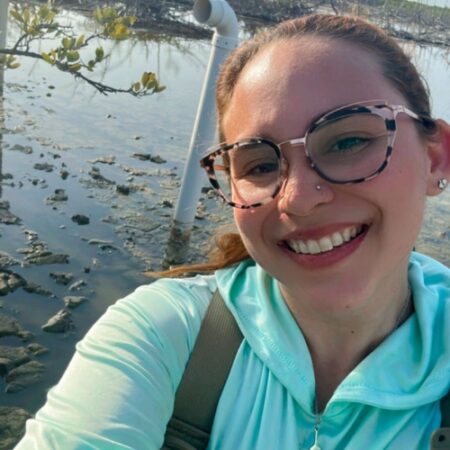 Retsel Gonzalez, University of Puerto Rico
Retsel Gonzalez, University of Puerto Rico
The Yellow-shouldered Blackbird, an endangered endemic found mainly in southwestern Puerto Rico. It faces ongoing challenges to its reproductive success, despite ongoing conservation efforts. A recent study suggested that the elevated temperatures inside artificial nests might be contributing to the high mortality rates among eggs and chicks. This project will compare survival rates and temperature levels in both artificial and natural nests to determine if temperature is a key factor impacting reproduction. The findings will help refine current conservation strategies, improve nest management, and hopefully boost recovery efforts for this iconic species.
Ecology of Bare-legged Owl (Margarobyas lawrencii) an endemic strigid in Cuba
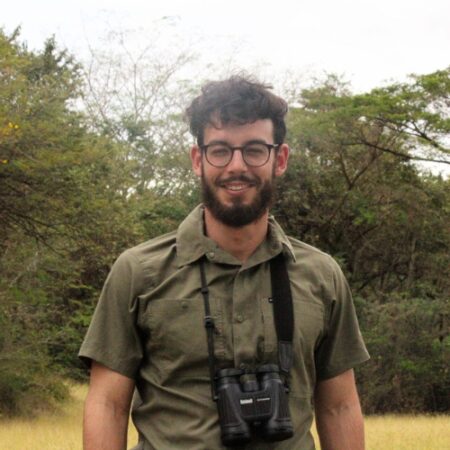 Jean Michel De Jongh González, Botanical National Garden, Havana University.
Jean Michel De Jongh González, Botanical National Garden, Havana University.
The Bare-legged Owl is endemic to Cuba and the only member of its genus, Margarobyas. It relies on dense forests and natural cavities for nesting, but it faces serious risks from habitat loss, which has led to its recent listing on the IUCN Red List of Threatened Species. This study will take place in the Sierra del Rosario Biosphere Reserve in western Cuba and will focus on two main areas: understanding the owl’s behavior and diet, and studying its use of habitats and nesting sites. The project will also tap into local knowledge from nearby communities and Havana. Fieldwork will be done during both the breeding season and off-season to gain a deeper understanding of this unique and remarkable bird.
Are you working on or planning a research or conservation project with Caribbean birds?
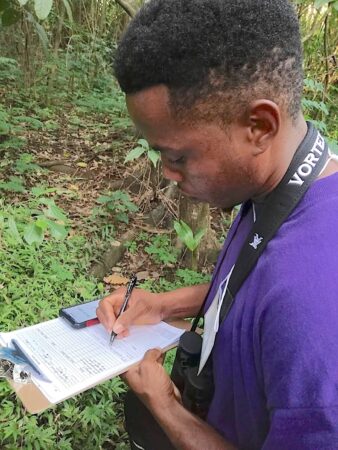
Our next call for proposals will be advertised in the fall of 2025. Members of BirdsCaribbean conducting research and conservation work are eligible to apply. Stay informed and don’t miss our announcements by subscribing to our monthly newsletter, joining our Listserv, and following us on social media (@BirdsCaribbean on Instagram, Facebook, Twitter, Youtube, and LinkedIn).
BirdsCaribbean thanks our generous donors for supporting these awards, and encourages others to donate to these programs, as well as to consider endowments or other large awards to ensure that our vital grants programs can continue indefinitely. You can help us to continue supporting these invaluable projects by making a donation here.
If you prefer to donate via check, please make this out to “BirdsCaribbean” and in the memo section, note the fund you are donating to. If you have questions, or would like to make other arrangements for donating, feel free to contact Alexia Morales, BirdsCaribbean Operations Manager (Alexia.Morales@birdscaribbean.org). Checks can be mailed to: BirdsCaribbean, 841 Worcester St. #130, Natick, MA 01760-2076
